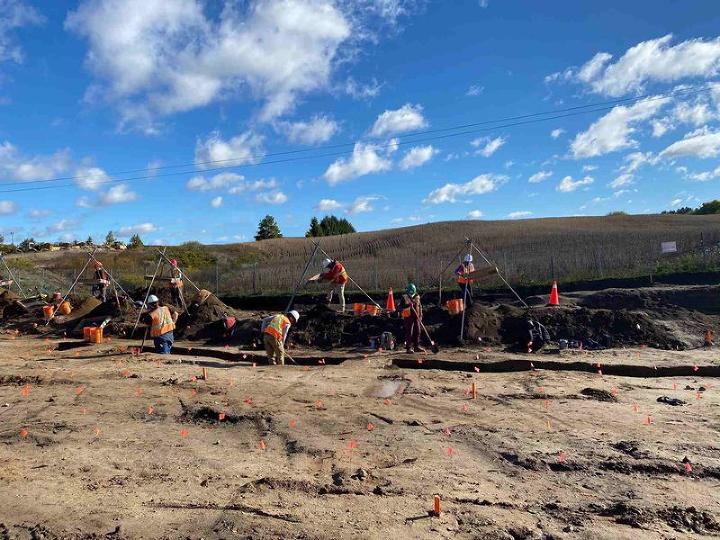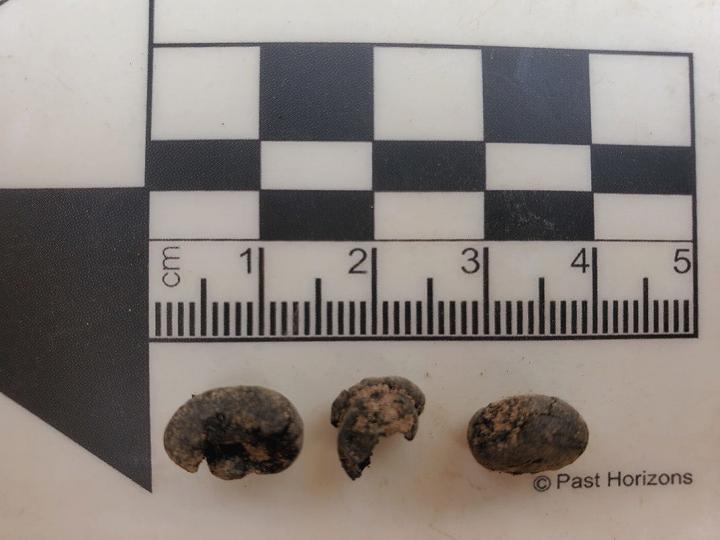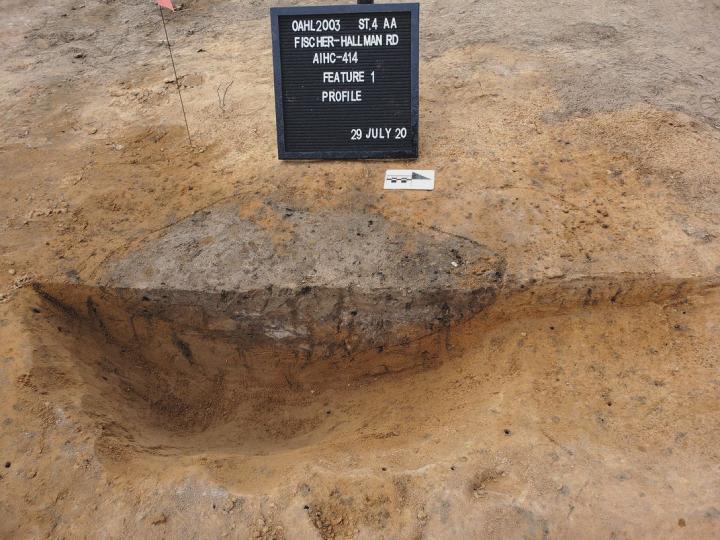 |
Canku Ota
|
 |
|
(Many Paths)
|
||
|
An Online Newsletter
Celebrating Native America
|
||
|
OCTOBER 2020 - Volume
18 Number 10
|
||
|
|
||
|
Remnants Of Woodland
Iroquois Village Discovered In Ontario
|
||
|
by Claire Bugos - SMITHSONIANMAG.COM
|
||
|
Excavations have
unearthed 35,000 artifacts, including carbonized corn, ceramics
and stone tools
An archaeological dig along southern Ontario’s Fischer-Hallman Road has unearthed traces of a Late Woodland Iroquois village dated to between roughly 1300 and 1600. Researchers originally expected to find just a few artifacts. As of last week, however, they’d excavated more than 35,000 objects, including rare carbonized pieces of beans and corn, cooking ceramics, animal bones, and stone tools, reports Luke Schulz for Kitchener Today. Wood PLC—the engineering and environmental consulting company leading archaeological assessment of the site—has also identified 25 structural features and 20 longhouse post molds. Barbara Slim, lead archaeologist on the dig, tells CBC News’ Liny Lamberink that these features include items like hearths, which provide crucial evidence of human activity. To ensure the team doesn’t miss anything, researchers hand sift through sections of soil measuring one-by-one square meters. So far, they’ve excavated around 400 of these units. Archaeologists know of at least four or five Iroquois villages that once existed in southern Ontario, Slim tells Kitchener Today. According to CBC News, pottery specimens unearthed at the site are typical of Late Woodland Middle Ontario Iroquoian villages.
Speaking with Johanna Weidner of the Waterloo Region Record, Slim notes that activity in the area predates the newly excavated village by millennia—a fact evidenced by a 4,000-year-old Late Archaic period arrowhead found during the dig. The archaeologist adds, “That just goes to show this was a very important resource area where people were coming back again and again.” Liaisons from nearby Indigenous communities, including Six Nations of the Grand River, the Haudenosaunee Development Institute and the Mississaugas of the Credit, are collaborating with archaeologists on the project. “We’re pretty excited to be working alongside them, having the First Nation community share their experience with us,” Slim tells CTV News’ Heather Senoran. Matthew Muttart, a field director with Wood PLC, tells Kitchener Today that the excavation team and First Nations groups will work together to clean and catalog the artifacts this winter. He hopes that the finds will help educate the public on the region’s history. “We’re in this part of the world that [has] been occupied for at least 10,000 years; it has a very rich history and a history that Canadians don’t get a lot of opportunities to learn about,” Muttart says. “We’re writing the last chapter of this site … so it’s really important that we’re doing it meticulously, giving it the respect and care that the site deserves.”
In addition to helping the public understand Ontario’s past, the discoveries provide important connections to the present, especially for Indigenous people today. “Don’t forget, we’ve been here all along, this isn’t ancient history,” Heather George, a Mohawk woman and historian at the University of Waterloo, tells CBC News. “I hope that by having these artifacts accessible to community and interpreted by community that it gives that space for those conversations to happen.” Fencing separates the dig from a nearby construction project, per CTV News. The construction company hopes to complete a two-lane road through the area by the end of 2020; the end date of archaeological work, meanwhile, will depend on what the team finds. “Usually in archaeology when you have a roadway you assume that that extent of disturbance would completely have removed the site,” Slim tells Kitchener Today. “In this case it did the opposite; it capped it under [almost six feet] of fill with four layers of asphalt—so we’re in the process of excavating that.” |
||||||
|
|
|
|
||
|
|
||
| Canku Ota is a free Newsletter celebrating Native America, its traditions and accomplishments . We do not provide subscriber or visitor names to anyone. Some articles presented in Canku Ota may contain copyright material. We have received appropriate permissions for republishing any articles. Material appearing here is distributed without profit or monetary gain to those who have expressed an interest. This is in accordance with Title 17 U.S.C. Section 107. | ||
|
Canku Ota is a copyright ©
2000 - 2020 of Vicki Williams Barry and Paul Barry.
|
||
 |
 |
|
|
The "Canku
Ota - A Newsletter Celebrating Native America" web site and
its design is the
|
||
|
Copyright ©
1999 - 2020 of Paul C. Barry.
|
||
|
All Rights Reserved.
|
||


